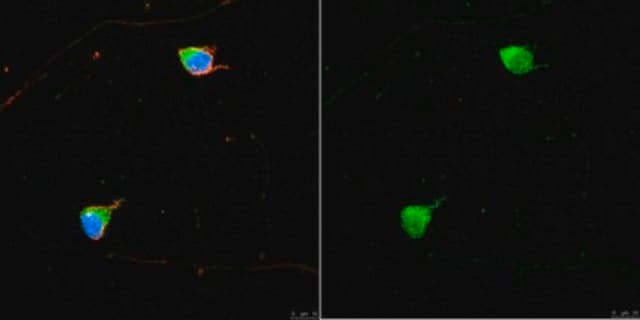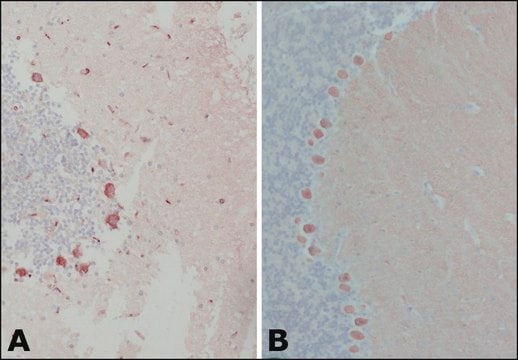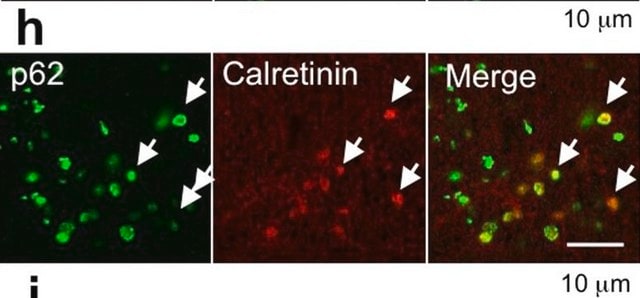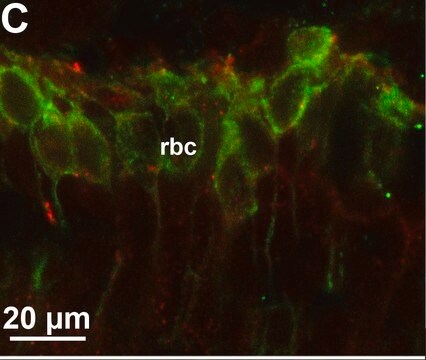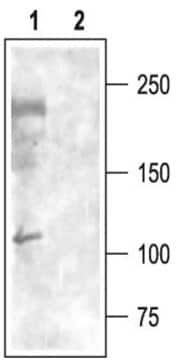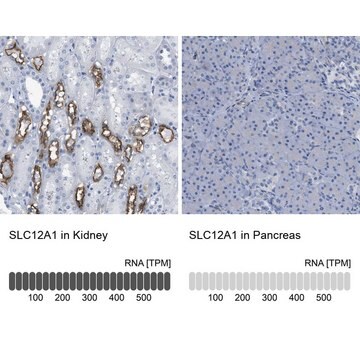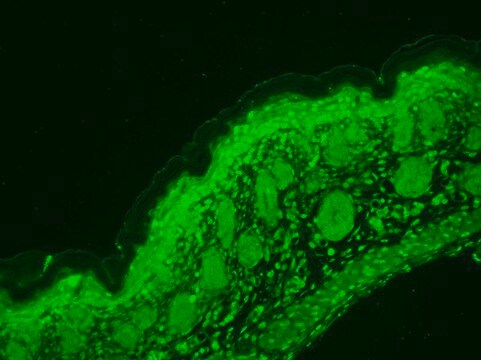C9848
Monoclonal Anti-Calbindin-D-28K antibody produced in mouse

clone CB-955, ascites fluid
Synonyme(s) :
Calbindin Antibody, Calbindin Antibody - Monoclonal Anti-Calbindin-D-28K antibody produced in mouse
About This Item
Produits recommandés
Source biologique
mouse
Niveau de qualité
Conjugué
unconjugated
Forme d'anticorps
ascites fluid
Type de produit anticorps
primary antibodies
Clone
CB-955, monoclonal
Poids mol.
antigen 28 kDa
Contient
15 mM sodium azide
Espèces réactives
mouse, human, guinea pig, canine, sheep, rat, pig, rabbit, feline, bovine, goat
Validation améliorée
independent
Learn more about Antibody Enhanced Validation
Concentration
15-55 mg/mL
Technique(s)
immunohistochemistry (formalin-fixed, paraffin-embedded sections): 1:3,000 using rat cerebellum sections
indirect ELISA: suitable
western blot: 1:3,000 using MDBK cell extract
Isotype
IgG1
Numéro d'accès UniProt
Conditions d'expédition
dry ice
Température de stockage
−20°C
Modification post-traductionnelle de la cible
unmodified
Informations sur le gène
human ... CALB1(793)
mouse ... Calb1(12307)
rat ... Calb1(83839)
Catégories apparentées
Description générale
Monoclonal Anti-Calbindin-D-28K (mouse IgG1 isotype) is derived from the CB-955 hybridoma produced by the fusion of mouse myeloma cells and splenocytes from BALB/c mice immunized with a purified bovine kidney calbindin-D-28K. The isotype is determined by a double diffusion immunoassay using Mouse Monoclonal Antibody Isotyping Reagents, Catalog Number ISO2.
Calbindin-D-28K belongs, together with calmodulin, S-100, parvalbumin, troponin C and other proteins, to a family of low molecular weight calcium-binding proteins (CaBPs). These CaBPs have homologous primary structures, which contain polypeptide folds of the EF-hand type for the acceptance of Ca2+. Calbindin is an attractive neuroanatomical marker. Despite its broad tissue distribution, calbindin-D-28K exhibits a cell-type specific expression pattern. Thus, it has been immunocytochemically localized in selected cells in many CNS structures, where it is thought to act either as an intracellular calcium buffer, or in the intramembranous transport of calcium. It is found predominantly in subpopulations of central and peripheral nervous system neurons, and in certain epithelial cells involved in Ca2+ transport such as distal tubular cells and cortical collecting tubules of the kidney, and in enteric neuroendocrine cells. Monoclonal antibody reacting specifically with calbindin-D-28K is instrumental in the localization of calbindin in different tissues and cell populations.
Spécificité
Immunogène
Application
Actions biochimiques/physiologiques
Forme physique
Stockage et stabilité
Clause de non-responsabilité
Not finding the right product?
Try our Outil de sélection de produits.
En option
Code de la classe de stockage
10 - Combustible liquids
Classe de danger pour l'eau (WGK)
WGK 1
Certificats d'analyse (COA)
Recherchez un Certificats d'analyse (COA) en saisissant le numéro de lot du produit. Les numéros de lot figurent sur l'étiquette du produit après les mots "Lot" ou "Batch".
Déjà en possession de ce produit ?
Retrouvez la documentation relative aux produits que vous avez récemment achetés dans la Bibliothèque de documents.
Les clients ont également consulté
Notre équipe de scientifiques dispose d'une expérience dans tous les secteurs de la recherche, notamment en sciences de la vie, science des matériaux, synthèse chimique, chromatographie, analyse et dans de nombreux autres domaines..
Contacter notre Service technique

